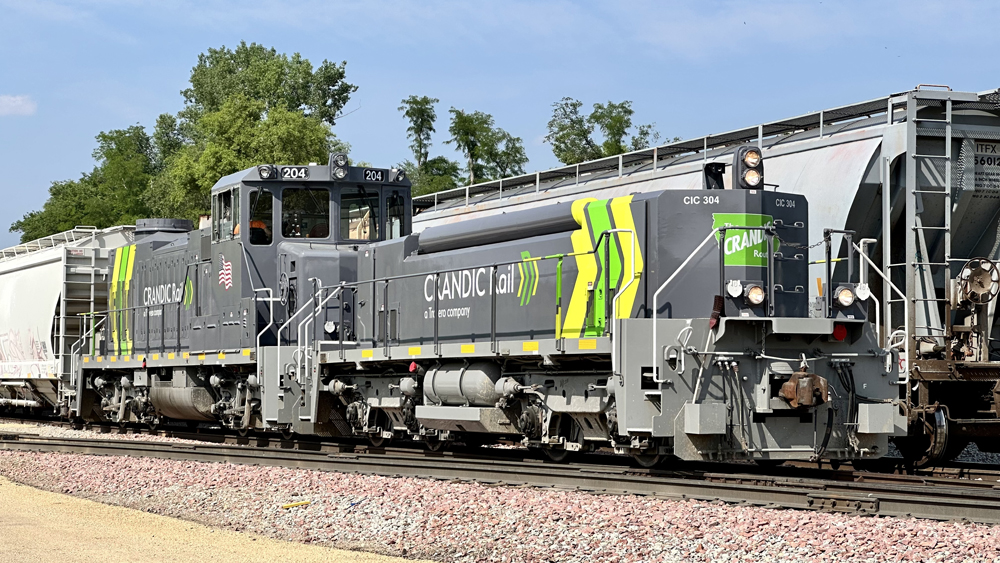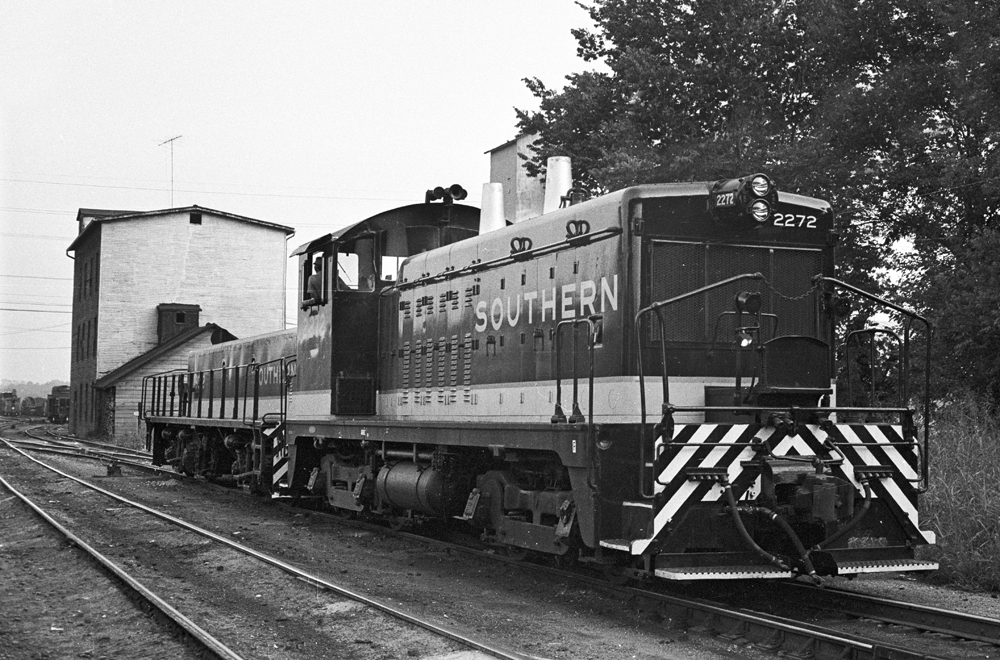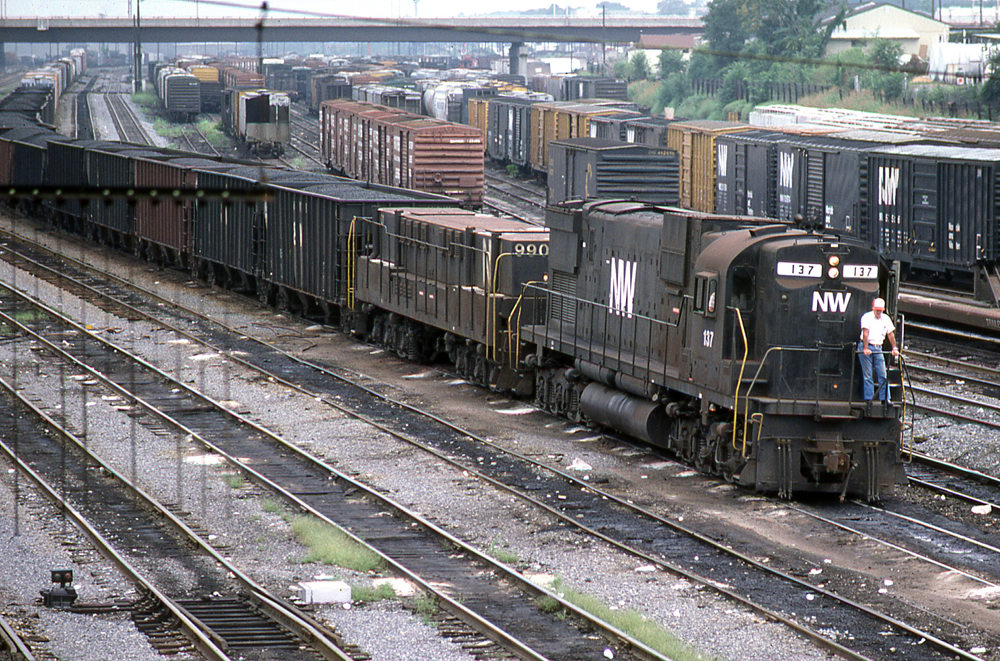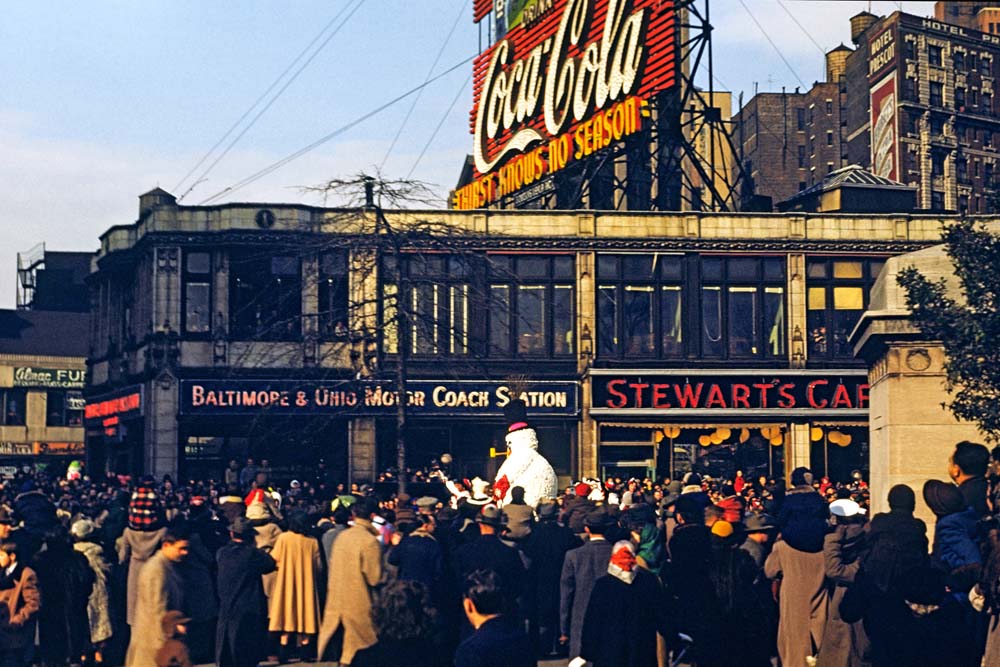Slug units

As avid railfans, we often find ourselves drawn to locations where we can witness a high volume of train activity. Cities like Chicago, Atlanta, or Portland boast major classification yards that serve as hot spots for freight operations. At such locations, we may encounter a peculiar sight: unusual-looking “locomotives” performing switching duties alongside iconic models like the EMD SD40-2 or GP40-2.
These aren’t motive power in the traditional sense. Rather, they are slugs paired with a “mother” unit. The giveaway is the the absence of radiator grilles and fans. Given that slugs lack a prime mover, there is no need for the air circulation essential for conventional units.
So, what exactly is a slug and how are they utilized?
Slugs are primarily used in low-speed operations, such as switching activities in rail yards, where increased tractive effort and braking power are essential. At low speeds, the prime mover of a diesel-electric locomotive can generate more electricity than its traction motors can effectively utilize. This surplus power, if not mitigated, can result in wheel slippage and potential overheating of the traction motors. Slugs increase the number of available traction motors, resulting in improved pulling and braking capabilities.
Additionally, slugs help distribute the load among the traction motors, and allows the mother unit’s excess electrical output to be applied as tractive effort. This helps prevent overheating that would result from the excess current, leading to enhanced reliability and reduced maintenance costs. To optimize traction, slugs are often loaded with ballast, typically large blocks of concrete, which substitute for the weight of the absent prime mover. The additional weight allows for more efficient operation and reduces wheel slippage.
Then & now
Early slugs: 1914 to 1944
Slug units have a fascinating history that traces to the early 20th century. Their inception can be attributed to the innovative efforts of the Montana copper hauling short line Butte, Anaconda & Pacific. With just shy of 26 miles of main line and 109 miles of additional track, including branches, yards, and spurs to the mines it served, BA&P was perhaps the busiest “little” railroad in Montana by the 1910s.
The railroad’s steam locomotives had a hard time handling its difficult grades and heavy trains. So, between 1912 and 1913, the railroad was electrified using overhead catenaries and locomotives supplied by General Electric. The railroad’s first order of electric locomotives included 17 units, with two geared for 45 mph to handle passenger trains.
Having gained the ability to move more tonnage with fewer trains, the BA&P returned to GE for a second order of 80-ton boxcabs. The railroad’s mechanical department teamed up with GE to create the railroad industry’s first slugs, realizing these increased the tractive effort significantly. The electric trailers, as they were called, were equipped with traction motors only, powered by large cables to handle the high current needed by the traction motors. These slugs served their purpose for 30 years, being phased out in the early 1940s.
The development of yard slugs: 1945 to 1979

It was not until the mid-1940s that the slug concept was more widely adopted. The New York Central, recognizing the potential of these units, converted straight electric and early diesel-electric units into slugs, specifically tailored for service in Chicago-area hump yards. This set the stage for future developments. It was followed by a surge in the 1960s and 1960s that saw railroads such as the Southern Railway, Chicago & North Western, Canadian Pacific, and Northern Pacific construct their own yard slugs.
The popularity of yard slugs reached its zenith in the early 1970s, with Louisville & Nashville, Norfolk & Western, Santa Fe, and Union Pacific establishing slug fleets, while the likes of Southern and the Chicago & North Western expanded existing fleets.
Seaboard Coast Line introduced a new wrinkle in 1971-72, collaborating with General Electric to introduce 25 road slugs. These were designed to complement the railroad’s cutting-edge U36Bs.
The peak of slug production for yard and road service arrived in 1979 with 62 completed slugs, with Conrail ordering the most from GE. Records indicate the total number of slugs may have exceeded 500 units, underscoring their widespread use.
Road slugs: the 1990s and beyond
CSX Transportation was a pioneer the development of road slugs, beginning a program in 1988 to convert worn-out EMD GP30 and GP35 units into slugs that could be mated to a GP40 mother and used at mainline speeds. By the time the program ended in 1991, a total of 131 units had been produced.
The prime movers and main generators were removed and substituted with concrete ballast. Other features necessary for the slug unit’s independent operation, such as hood doors, radiator fans, and exhaust stacks, were eliminated and sealed off. Although extensively modified, they retained their original frame and carbody – still resembling the classic lines of an EMD Geep.
The program provided the mother unit with better tractive effort in slow-speed settings, such as a coal mine or during yard switching. Since CSX was a major coal carrier in the early ‘90s, the GP30 and GP35 “Road Mate” units could be seen “slugging it out” on trains of black diamonds throughout the system. They were popular with crews because of their serene ride and low-speed hauling capabilities.
“I always liked working on the GP30 and GP35 ‘Road Mate’ slugs,” said Kerry Douglas, a former CSX conductor from Chattanooga, Tenn. “Riding in those units was always a pleasure because of how quiet they were. For example, it felt just like riding in a regular locomotive but the only sounds you really heard was the airbrakes, bell, and horn.”
While the program was an overall success, as time passed and railroad operating practices changed, these rebuilds reached the end of their service life and were retired in the late 2010s.
Following in CSX’s footsteps, Norfolk Southern began experimenting with road slugs in the mid-2000s. Having found similar success, NS has since built dozens of road slugs out of EMD GP50 carbodies and has even constructed entirely new units with home-built frames, cabs, and other components. As of 2023, Norfolk Southern continues to use its slugs in both road and yard service.
How they are made

The construction of slug units, known as “slugging,” typically involves conversion of existing locomotives. A locomotive, typically a retired or trade-in model, is selected. Steps include the removal of the prime mover, retention of the traction motors, the installation of control equipment and m.u. receptacles, weight adjustment (or ballast), and exterior modifications such as the removal of radiator grilles and cooling fans.
Slug units have been reconstructed from a diverse selection of locomotives as small as GE 45-ton center cabs. Noteworthy examples include RSD15s, SD24s, and SD40s for Santa Fe; C628s and C630s for Southern Pacific; and Fairbanks-Morse H24-66 Train Masters for Norfolk & Western.
Each conversion is engineered to adhere to industry regulations, and completed units undergo rigorous testing to ensure compatibility, functionality, and adherence to safety standards.
More modern slugs in use
Slugs in remote-control service: These are paired with a mother unit with remote-control systems, enabling them to be operated by a conductor using a belt-pack control device. The remote control operation is of the mother unit, not the slug.
Yard Slugs: Yard slugs are tailored for yard switching and do not typically have cabs. They are equipped with robust traction systems and enhanced weight to optimize performance where controlled movement and increased tractive effort are crucial.
Slugs are invaluable in enhancing the capabilities of diesel-electric locomotives, and their diverse types for various operational needs continue to play a vital role in the rail industry.














I understand, that when a Prime mover is designed, the Generator or Alternator, is matched power wise with four or six Traction motors.
So, where does the extra power for the additional four Traction motors of the slug come from? You get nothing for nothing!
The 4 or 6 electric motors on the locomotive cannot use all the power produced by the alternator when operating at low speeds. Re-read the article.
I used to watch the IHB switchers mated with slugs at the Riverdale, Illinois yard back in the 1960’s and 1970’s. I had a birds’ eye view from the Halstead Street overpass south of 138th Street. They were at the east side of the hump, and often meeting NYC freight trains.
This is an excellent article on their history, and cleared up many questions I had over the years. Thanks for articulating.